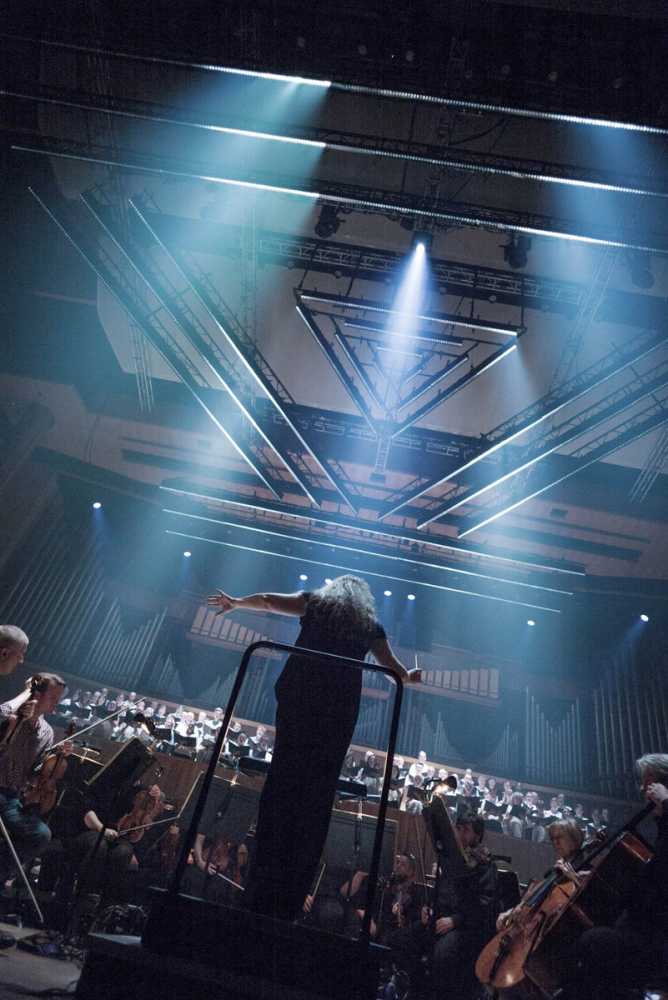X4 Bars star in Dream of Gerontius at RFH
- Details

Her aim “to map the emotions of the music in order to give the audience a visceral sensation, with all lighting textures complementary to the music” was achieved with 160 of GLP’s award-winning X4 Bars, which were used almost exclusively in the set.
These fixtures formed the main component of the show, featuring full orchestra and chorus, as the LD mapped every single pixel individually on an ETC EOS desk - with programmer Jenny Kershaw setting up over 500 cues on the console.
This exercise required not only major support from ETC’s Andy Davies but also GLP’s Simon Barrett, who equipped all 160 fixtures (including 10 of the smaller Bar 10 battens) with the company’s new 2 degree filter. Fitted as a diffuser on the front, this smoothed out any possible colour shift when viewed at close range.
The stage set itself comprised a large outer tri-lined triangle of bars, set at an angle of 10° from the mother truss, with a smaller triangle in the middle, and a further three long X4 Bar 20 lines at the back.
Lucy Carter visualised this epic design in WYSIWYG over a three-week period before having to set up the massive test rig at RFH, which then had to be derigged for another production before being reinstalled in what proved to be an extremely tight time frame.
After being shown the versatile X4 Bars she sourced the lights from PRG, led by Jon Cadbury, who have supplied both her and the ENO with solutions in the past. “The Bars gave me the zoom possibility, with a tight curtain of light, as well as the flood as a wash. On top of that, the tilting was brilliant, as was the colour mixing. I had initially only wanted them to be white but suddenly I had a whole tool box and great colour pallet.”
Carter also spoke to top theatre designer, Neil Austin, who has worked closely with GLP solutions, and he suggested the 2 degree filter, which he had been instrumental in designing. “At close range the blending hadn’t quite come together and this immediately alleviated any fears, although I doubt that at 10 metres it would have been noticeable. But it was really impressive and cleared any anxieties about short distance viewing.”
(Jim Evans)
















